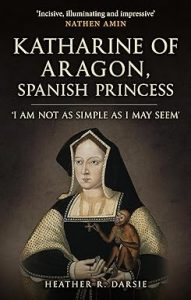Leanda de Lisle’s article in the March issue of BBC History Magazine focuses on how the legend of Lady Jane ‘inspired a fraud’ (p35) that has lasted for over a century.
Only one contemporary description of the teenage Queen exists and has been used to identify various portraits but De Lisle argues that this letter is a fake and with this discovery, Lady Jane disappears from view.
The letter written by Baptista Spinola, a merchant from Genoa, describes Queen Jane’s procession to the Tower of London on 10th July 1553. (You can read his account here – Spinola). This description of Jane was first published in ‘The Nine Days Queen: Lady Jane Grey and Her Times’ by Richard Davey in 1909.
De Lisle describes how while researching her latest book, (‘The Sisters Who Would Be Queen: The Tragedy of Mary, Katherine and Lady Jane Grey’), she was unable to find the original letter in the Genoa archives or in any works prior to Davey.
She writes that it ‘became clear the letter is a fake that mixes details from contemporary sources with fiction’ (p.36). The main points of her argument are:
• The physical description of Jane in the letter also fits that of Delaroche’s painting, ‘The Execution of Lady Jane Grey’ and is similar to contemporary descriptions of Mary Tudor.
• In London at the time there was a merchant called Benedict Spinola and a soldier called Baptista Spinola.
• Spinola’s description of Jane’s clothes is similar to an illustration in Arden Holt’s ‘Fancy Dresses Described’ which was published in 1882.
(Thanks to Sonja Marie at The Lady Jane Grey Internet Museum.)
• Davey’s book contains other ‘invented’ facts relating to Jane’s imprisonment.
De Lisle argues that Davey ‘seems to have spotted a need for an account of Jane’ (p36)and with her revelation that Spinola’s letter is most probably a fake, it is one that still needs to be met.
Quotes – copyright BBC History Magazine






































